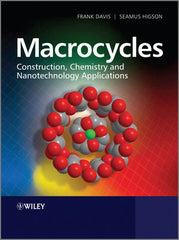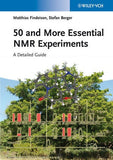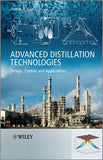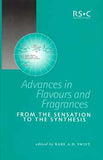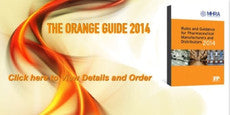Macrocycles: Construction, Chemistry and Nanotechnology Applications By Frank Davis, Séamus Higson
Macrocycles: Construction, Chemistry and Nanotechnology Applications
Frank Davis, Séamus Higson
Paperback.
610 pages
March 2011
|
Macrocycles: Construction, Chemistry and Nanotechnology Applications is an essential introduction this important class of molecules and describes how to synthesise them, their chemistry, how they can be used as nanotechnology building blocks, and their applications. A wide range of structures synthesised over the past few decades are covered, from the simpler cyclophanes and multi-ring aromatic structures to vases, bowls, cages and more complex multi-ring systems and 3D architectures such as “pumpkins”, interlocking chains and knots. Topics covered include:
- principles of macrocycle synthesis
- simple ring compounds
- multi-ring aromatic structures
- porphyrins and phthalocanines
- cyclophanes
- crown ethers, cryptands and spherands
- calixarenes, resorcinarenes, cavitands, carcerands, and heterocalixarenes
- cyclodextrins
- cucurbiturils
- cyclotriveratylenes
- rotaxanes
- catenanes
- complex 3D architectures, including trefoils and knots
Macrocycles: Construction, Chemistry and Nanotechnology Applications distills the essence of this important topic for undergraduate and postgraduate students, and for researchers in other fields interested in getting a general insight into this increasingly important class of molecules.
- First advanced textbook to provide an overview of this class of molecules
- Assumes no previous knowledge, and is structured to take the reader in a logical step-by-step approach, from basic early structures through to current state of the art
- Directed reading is given to more specialist texts for readers who want further information in given areas
- Each chapter commences with learning objectives and concludes with a summary to help students enrolled on taught programmes
- Contains over 100 diagrams and structural formulae to illustrate key principles and concepts
- A companion website will contain links to resources described in the book and a library of downloadable diagrams for teaching purposes
1. Introduction.
1.1. Simple ring compounds.
1.2. Three dimensional aliphatic carbon structures.
1.3. Annulenes.
1.4. Multi-ring aromatic structures.
1.5. Porpyrins and phthalocanines.
1.6. Conclusions.
References.
2. Cyclophanes.
2.1. Introduction to cyclophanes.
2.2. Cyclophanes with one aromatic system and aliphatic chain.
2.3. Cyclophanes with more than 1 aromatic ring.
2.4. Napthalenophanes and other aromatic systems.
2.5. Cyclophanes containing heteroaromatic systems.
2.6. Ferrocenophanes.
References.
3. Crown ethers, cryptands and other compounds.
3.1. Introduction.
3.2. Crown ethers.
3.3. Simple complexes with crown ethers.
3.4. Azacrowns, cyclens and cyclams.
3.5. Crowns containing other heteroatoms.
3.6. Lariat and bibracchial crown ethers.
3.7. Cryptands.
3.8. Spherands.
3.9. Combined and multiple systems.
3.10. Applications of crown ethers and related compounds.
3.11. Conclusions.
References.
4. Calixarenes.
4.1. Introduction to calixarenes.
4.2. History of the calixarenes.
4.3. Structures of calixarenes.
4.4. Chemical modification of calixarenes.
4.5. Complexes with calixarenes.
4.6. Bis- and multicalixarenes.
4.7. Oxacalixarenes, azacalixarenes and thiacalixarenes.
4.8. Resorcinarenes - synthesis and structure.
4.9. Cavitands and carcerands.
4.10. Uses of calixarenes and conclusions.
References.
5. Heterocalixarenes and calixnaphthalenes.
5.1. Introduction to heterocalixarenes and calixnaphthalenes.
5.2. Calixnaphthalenes.
5.3. Tropolone based macrocycles.
5.4. Calixfurans.
5.5. Calixpyrroles.
5.6. Calixindoles, calixpyridines and calixthiophenes.
5.7. Conclusions.
References.
6. Cyclodextrins.
6.1. Introduction to cyclodextrins.
6.2. Complex formation by cyclodextrins.
6.3. Cyclodextrins of other sizes.
6.4. Modification reactions of cyclodextrins.
6.5. Selectivity of cyclodextrins.
6.6. Multiple cyclodextrin systems.
6.7. Polymeric cyclodextrins.
6.8. Cyclodextrins combined with other macrocyclic systems.
6.9. Therapeutic uses of cyclodextrins.
6.10. Other uses of cyclodextrins.
6.11. Conclusions.
References.
7. Cyclotriveratylenes and cryptophanes.
7.1. Introduction to cyclotriveratrylenes and cryptophanes.
7.2. Synthesis of cyclotriveratrylenes.
7.3. Modification of cyclotriveratrylenes.
7.4. Synthesis of optically active cyclotriveratrylenes.
7.5. Modification of the bridging groups.
7.6. Modification of the aromatic rings with organometallic groups.
7.7. Selective binding applications of cyclotriveratrylenes.
7.8. Analogues of CTV.
7.9. Cryptophanes - synthesis and structure.
7.10. Cryptophanes - chemical modification.
7.11. Complexes with cryptophanes.
7.12. Cryptophane/Xenon complexes.
7.13. Other uses of cryptophanes.
7.14. Hemicryptophanes.
7.15. Conclusions.
References.
8. Cucurbiturils.
8.1. Introduction to cucurbiturils.
8.2. Complexation behaviour of simple cucurbiturils.
8.3. Modification of cucurbiturils.
8.4. Uses of cucurbiturils.
8.5. Hemicucurbiturils.
8.6. Conclusions.
References.
9. Rotaxanes and catenanes.
9.1. Introduction to rotaxanes and catenanes.
9.2. Rotaxanes.
9.3. Rotaxanes as molecular machines.
9.4. Thin films of rotaxanes.
9.5. Polyrotaxanes.
9.6. Catenanes.
9.7. Switchable catenanes.
9.8. Catenanes on surfaces.
9.9. Polycatenanes and catenated polymers.
9.10. Natural catenanes.
9.11. Conclusions.
References.
10. Other supermolecular systems, molecular motors, machines and nanotechnological applications.
10.1. Introduction.
10.2. Other molecular systems.
10.3. Molecular devices, motors and machines.
10.4. Conclusions.
References.
“Macrocycles : Construction, Chemistry and Nanotechnology Applications distils the essence of this important topic for undergraduate and postgraduate students, and for researchers in other fields who are interested in getting a general insight into this increasingly important class of molecules.” (Chimie Nouvelle, 1 March 2013)
“Figures aside, the book provides a good introduction to novices in the field and points readers to the key references in the macrocyclic chemistry.” (Chemistry World, 2012)
Related Products
-
50 and More Essential NMR Experi...
6,555.00
7,283.00 -
A Fragrant Introduction to Terpe...
5,200.00
5,891.00 -
A Textbook of Modern Toxicology,...
8,942.00
10,520.00 -
Active Pharmaceutical Ingredient...
3,200.00
3,495.00 -
Advanced Distillation Technologi...
13,500.00
15,000.00 -
Advances in Flavours and Fragran...
7,500.00
8,568.00
- Architecture & Construction Management Books
- Biochemistry, Bioengineering and Biotechnology Books
- Books on Analytical Techniques, GC MS, LC, TLC, HPLC, NMR Spectroscopy
- Books on Water and Wastewater Treatment, Analysis Water Treatment Plants
- Chemical Technology, Organic Chemistry, Chemical Synthesis and Chemical Analysis Books
- Cosmetics Science, Cosmetics Formulations, Manufacture and their Analysis Books
- Drugs and Pharma Science Books
- Essential Oils, their Analysis, Natural Products Extraction, Distillation , Isolates Related Books
- Flavor Science, Flavor Analysis, Flavor Creation, Food Flavors Books
- Food Science and Technology, Baking , Food Ingredients , Food Quality , Food Regulations
- Formulations of Perfumes for Agarbatti, Air Freshners, Soaps & Detergents, Fabric Softeners , French style Perfumes, Attars , OUD, Fine Fragrances
- Fragrances, Scents, Attars , Perfumery and Aroma Chemicals Books
- Herbal, Ayurvedic, Medicinal Plants and Aromatic Plants Books
- Law Books
- Major Reference Works (MRWS) Sets - MultiVolume Sets
- Medical Books
- Medical Journals Wolters Kluwer | Medknow India
- NEW ARRIVALS
- Perfumer's Resources
- Special Indian Reprint !



